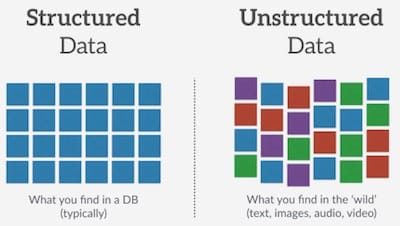TensorFlow 2 中文文档 - 特征工程结构化数据分类
TensorFlow2 文档系列文章链接:
TensorFlow 2 / 2.0 中文文档
(Jul 9, 2019)
TensorFlow 2 中文文档 - MNIST 图像分类
(Jul 9, 2019)
TensorFlow 2 中文文档 - IMDB 文本分类
(Jul 9, 2019)
TensorFlow 2 中文文档 - 特征工程结构化数据分类
(Jul 9, 2019)
TensorFlow 2 中文文档 - 回归预测燃油效率
(Jul 11, 2019)
TensorFlow 2 中文文档 - 过拟合与欠拟合
(Jul 12, 2019)
TensorFlow 2 中文文档 - 保存与加载模型
(Jul 13, 2019)
TensorFlow 2 中文文档 - 卷积神经网络分类 CIFAR-10
(Jul 19, 2019)
TensorFlow 2 中文文档 - TFHub 迁移学习
(Jul 19, 2019)
TensorFlow 2 中文文档 - RNN LSTM 文本分类
(Jul 22, 2019)
源代码/数据集已上传到
Github - tensorflow2-docs-zh
TF2.0 TensorFlow 2 / 2.0 中文文档 - 结构化数据分类 Classify structured data
主要内容:介绍如何对结构化数据(例如 CSV 中的表格数据)分类。
这个教程包含完整的代码:
使用 Pandas 加载 CSV 文件。
使用 tf.data 打乱数据并获取batch。
使用特征工程(feature columns)将 CSV 中的列映射为特征值(features)
使用 Keras 搭建、训练和评估模型。
数据集 数据集由 Cleveland Clinic Foundation 提供的几百行心脏病数据构成。每一行代表一个病人,每一列描述一个属性,数据共14列,最后一列为是否患病。我们将使用这些信息预测一个病人是否有心脏病。这是一个典型的二分分类问题。
列
描述
特征类型
数据类型
Age
年龄
数值
integer
Sex
性别(1男性; 0女性)
类别
integer
…
…
…
…
Thal
3 = normal; 6 = fixed defect; 7 = reversable defect
类别
string
Target
是否感染,(1是;0否)
分类
integer
导入库 1 2 pip install -q sklearn pip install -q tensorflow==2.0.0-beta1
1 2 3 4 5 6 7 import numpy as npimport pandas as pdimport tensorflow as tffrom tensorflow import feature_columnfrom tensorflow.keras import layersfrom sklearn.model_selection import train_test_split
使用 Pandas 读取数据 1 2 3 URL = 'https://storage.googleapis.com/applied-dl/heart.csv' dataframe = pd.read_csv(URL) dataframe.head()
-
age
sex
cp
…
slope
ca
thal
target
0
63
1
1
3
0
fixed
0
1
67
1
4
2
3
normal
1
2
67
1
4
2
2
reversible
0
3
37
1
3
3
0
normal
0
4
41
0
2
1
0
normal
0
分割训练集、验证集和测试集 1 2 3 4 5 train, test = train_test_split(dataframe, test_size=0.2 ) train, val = train_test_split(train, test_size=0.2 ) print(len (train), 'train examples' ) print(len (val), 'validation examples' ) print(len (test), 'test examples' )
使用 tf.data ,我们可以使用特征工程(feature columns)将 Pandas DataFrame 中的列映射为特征值(features)。如果是一个非常大的 CSV 文件,不能直接放在内存中,就必须直接使用 tf.data 从磁盘中直接读取数据了。
1 2 3 4 5 6 7 8 9 def df_to_dataset (dataframe, shuffle=True , batch_size=32 ): dataframe = dataframe.copy() labels = dataframe.pop('target' ) ds = tf.data.Dataset.from_tensor_slices((dict (dataframe), labels)) if shuffle: ds = ds.shuffle(buffer_size=len (dataframe)) ds = ds.batch(batch_size) return ds
1 2 3 4 batch_size = 5 train_ds = df_to_dataset(train, batch_size=batch_size) val_ds = df_to_dataset(val, shuffle=False , batch_size=batch_size) test_ds = df_to_dataset(test, shuffle=False , batch_size=batch_size)
1 2 3 4 for feature_batch, label_batch in train_ds.take(1 ): print('Every feature:' , list (feature_batch.keys())) print('A batch of ages:' , feature_batch['age' ]) print('A batch of targets:' , label_batch )
1 2 3 Every feature: ['cp' , 'age' , 'sex' , ... , 'slope' , 'ca' ] A batch of ages: tf.Tensor([50 62 37 69 58 ], shape=(5 ,), dtype=int32) A batch of targets: tf.Tensor([0 0 0 0 0 ], shape=(5 ,), dtype=int32)
可以看到数据集返回了一个键为列名的字典。
特征列示例 TensorFlow 提供了很多种类型的特征列(feature column),接下来给几个例子看一看每一列的值是怎么被转换的。
1 2 3 4 5 6 example_batch = next (iter (train_ds))[0 ] def demo (feature_column ): feature_layer = layers.DenseFeatures(feature_column) print(feature_layer(example_batch).numpy())
1) Numeric column 特征列的输出是模型的输入,Numeric columns 是最简单的类型,数值本身代表某个特征真实的值,因此转换后,值不发生改变。
1 2 age = feature_column.numeric_column("age" ) demo(age)
1 2 3 4 5 [[50. ] [62. ] [37. ] [69. ] [58. ]]
在这个数据集中,大部分列都是数值类型。
2) Bucketized columns 有时候,并不想直接将数值传给模型,而是希望基于数值的范围离散成几个种类。比如人的年龄,0-10归为一类,用0表示;11-20归为一类,用1表示。我们可以用 bucketized column 将年龄划分到不同的 bucket 中。用中文比喻,就好像提供了不同的桶,在某一范围内的扔进A桶,另一范围的数据扔进B桶,以此类推。下面的例子使用独热编码来表示不同的 bucket。
1 2 age_buckets = feature_column.bucketized_column(age, boundaries=[18 , 25 , 30 , 35 , 40 , 45 , 50 , 55 , 60 , 65 ]) demo(age_buckets)
1 2 3 4 5 [[0. 0. 0. 0. 0. 0. 0. 1. 0. 0. 0. ] [0. 0. 0. 0. 0. 0. 0. 0. 0. 1. 0. ] [0. 0. 0. 0. 1. 0. 0. 0. 0. 0. 0. ] [0. 0. 0. 0. 0. 0. 0. 0. 0. 0. 1. ] [0. 0. 0. 0. 0. 0. 0. 0. 1. 0. 0. ]]
3) Categorical columns 在这个数据集中,thal列使用字符串表示(e.g. ‘fixed’, ‘normal’, ‘reversible’)。字符串不能直接传给模型。所以我们要先将字符串映射为数值。可以使用categorical_column_with_vocabulary_list 和 categorical_column_with_vocabulary_file 来转换,前者接受一个列表作为输入,后者可以传入一个文件。
1 2 3 4 5 thal = feature_column.categorical_column_with_vocabulary_list( 'thal' , ['fixed' , 'normal' , 'reversible' ]) thal_one_hot = feature_column.indicator_column(thal) demo(thal_one_hot)
1 2 3 4 5 [[0. 1. 0. ] [0. 1. 0. ] [0. 1. 0. ] [0. 1. 0. ] [0. 0. 1. ]]
可以看到,最终的输出向量也是独热编码,和 Bucketized column 相似。
4) Embedding column 假设某一列有上千种类别,用独热编码来表示就不太合适了。这时候,可以使用 embedding column。embedding column 可以压缩维度,因此向量中的值不再只由0或1组成,可以包含任何数字。
在有很多种类别时使用 embedding column 是最合适的。接下来只是一个示例,不管输入有多少种可能性,最终的输出向量定长为8。
1 2 3 thal_embedding = feature_column.embedding_column(thal, dimension=8 ) demo(thal_embedding)
1 2 3 4 5 [[-0.42 -0.42 0.34 0.47 0.21 0.33 0.34 0.65 ] [-0.42 -0.42 0.34 0.47 0.21 0.33 0.34 0.65 ] [-0.42 -0.42 0.34 0.47 0.21 0.33 0.34 0.65 ] [-0.42 -0.42 0.34 0.47 0.21 0.33 0.34 0.65 ] [ 0.20 0.07 0.06 0.01 -0.47 -0.10 -0.70 0.00 ]]
5) Hashed feature columns 另一种表示类别很多的 categorical column 的方式是使用 categorical_column_with_hash_bucket。这个特征列会计算输入的哈希值,然后根据哈希值对字符串进行编码。哈希桶(bucket)个数即参数hash_bucket_size。哈希桶(hash_buckets)的个数应明显小于实际的类别个数,以节省空间。
注意:哈希的一大副作用是可能存在冲突,不同的字符串可能映射到相同的哈希桶中。不过,在某些数据集,这个方式还是非常有效的。
1 2 3 thal_hashed = feature_column.categorical_column_with_hash_bucket( 'thal' , hash_bucket_size=1000 ) demo(feature_column.indicator_column(thal_hashed))
1 2 3 4 5 [[0. 0. 0. ... 0. 0. 0. ] [0. 0. 0. ... 0. 0. 0. ] [0. 0. 0. ... 0. 0. 0. ] [0. 0. 0. ... 0. 0. 0. ] [0. 0. 0. ... 0. 0. 0. ]]
6) Crossed feature columns 将几个特征组合成一个特征,即 feature crosses,模型可以对每一个特征组合学习独立的权重。接下来,我们将组合 age 和 thal 列创建一个新的特征。注意:crossed_column不会创建所有可能的组合,因为组合可能性会非常多。背后是通过hashed_column处理的,可以设置哈希桶的大小。
1 2 crossed_feature = feature_column.crossed_column([age_buckets, thal], hash_bucket_size=1000 ) demo(feature_column.indicator_column(crossed_feature))
1 2 3 4 5 [[0. 0. 0. ... 0. 0. 0. ] [0. 0. 0. ... 0. 0. 0. ] [0. 0. 0. ... 0. 0. 0. ] [0. 0. 0. ... 0. 0. 0. ] [0. 0. 0. ... 0. 0. 0. ]]
选择需要使用的列 为了训练出准确率高的模型,大数据集、选取有意义的列、数据的展示方式都是非常重要的。
接下来的示例,我们随机选取一些列来训练。
1 2 3 4 5 6 7 8 9 10 11 12 13 14 15 16 17 18 19 20 21 22 23 24 feature_columns = [] for header in ['age' , 'trestbps' , 'chol' , 'thalach' , 'oldpeak' , 'slope' , 'ca' ]: feature_columns.append(feature_column.numeric_column(header)) age_buckets = feature_column.bucketized_column(age, boundaries=[18 , 25 , 30 , 35 , 40 , 45 , 50 , 55 , 60 , 65 ]) feature_columns.append(age_buckets) thal = feature_column.categorical_column_with_vocabulary_list( 'thal' , ['fixed' , 'normal' , 'reversible' ]) thal_one_hot = feature_column.indicator_column(thal) feature_columns.append(thal_one_hot) thal_embedding = feature_column.embedding_column(thal, dimension=8 ) feature_columns.append(thal_embedding) crossed_feature = feature_column.crossed_column([age_buckets, thal], hash_bucket_size=1000 ) crossed_feature = feature_column.indicator_column(crossed_feature) feature_columns.append(crossed_feature)
创建特征层 我已经定义好了特征列,接下来使用 DenseFeatures 层将特征列传入到模型中。
1 feature_layer = tf.keras.layers.DenseFeatures(feature_columns)
之前 batch 大小设置为5,是为了方便示例。接下来batch设置为32,创建新的 input pipeline。
创建、编译和训练模型 1 2 3 4 5 6 7 8 9 10 11 12 13 14 15 model = tf.keras.Sequential([ feature_layer, layers.Dense(128 , activation='relu' ), layers.Dense(128 , activation='relu' ), layers.Dense(1 , activation='sigmoid' ) ]) model.compile (optimizer='adam' , loss='binary_crossentropy' , metrics=['accuracy' ], run_eagerly=True ) model.fit(train_ds, validation_data=val_ds, epochs=5 )
1 2 3 4 5 6 7 8 9 10 11 12 Epoch 1/5 7/7 [========] - 1s 142ms/step - loss: 1.3386 - accuracy: 0.6090 - val_loss: 1.0882 - val_accuracy: 0.2857 Epoch 2/5 7/7 [========] - 0s 31ms/step - loss: 1.4225 - accuracy: 0.3849 - val_loss: 0.9518 - val_accuracy: 0.7347 Epoch 3/5 7/7 [========] - 0s 32ms/step - loss: 0.6602 - accuracy: 0.7165 - val_loss: 0.7390 - val_accuracy: 0.6327 Epoch 4/5 7/7 [========] - 0s 30ms/step - loss: 0.7332 - accuracy: 0.6310 - val_loss: 0.6794 - val_accuracy: 0.7143 Epoch 5/5 7/7 [========] - 0s 31ms/step - loss: 0.5617 - accuracy: 0.7003 - val_loss: 0.5326 - val_accuracy: 0.7143 <tensorflow.python.keras.callbacks.History at 0x7ffa4ac2f4e0>
1 2 loss, accuracy = model.evaluate(test_ds) print("Accuracy" , accuracy)
1 2 2/2 [========] - 0s 15ms/step - loss: 0.3907 - accuracy: 0.7869 Accuracy 0.78688526
如果你使用深度学习模型,以及更大、更复杂的数据集,准确率会更高。一般来说,像这样的小数据集,建议使用决策树或者随机森林。这个教程的主要目的不是训练一个准确率高的模型,而是作一个示例:TensorFlow 如何处理结构化的数据。
试一试吧。
返回文档首页
参考文档:Classify structured data
附 推荐
上一篇 « TensorFlow 2 中文文档 - IMDB 文本分类
下一篇 » TensorFlow 2 中文文档 - 回归预测燃油效率




